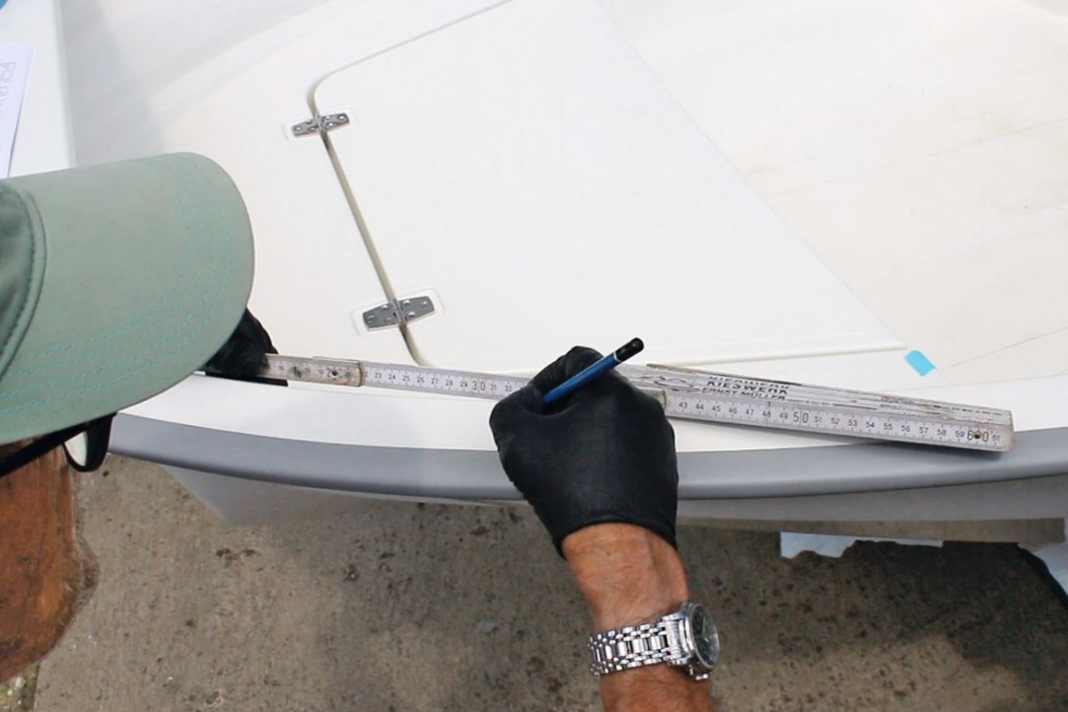
Movement safety is not only a top priority for the BOOTE testers.
A non-slip structure on the floor and stable, well-placed handrails are a must for an open boat like the Pegazus 450. Any boat manufacturer who skimps or works sloppily here will quickly be criticised by the inspectors. Quite rightly so, right? Consequently, factory boss Manfred Welkamer decided in favour of the four-part railing package for our Pegazus and invested another 426 euros in it.






The delivered package contains a lot of first-class processed stainless steel. In other words, double bow and stern rails (left and right) and all the screws and washers required for assembly. The necessary tools such as a folding rule, pencil, drill, 13 mm ring spanner, a set of HSS drill bits, sealant, thinner and a few dry cloths must be brought along by the screwdriver.
The first step is to transfer the dimensions given in the exemplary assembly instructions to the boat. This means that the first side support of the bow railing should be exactly 325 mm behind the end edge of the foredeck. The railing is now brought into the prescribed position in pairs, if everything fits, the "positions" of the three supports are then marked on the coaming with a pencil.
ImportantBecause there is little space for the screws and washers on the underside, the supports must be positioned directly on the edge of the skirting board. Check all the markings again and only then pre-drill with a small (3.5 mm) drill bit, which does not slip as easily as a large one. Once the holes have been drilled to the correct size with an 8.5 mm drill, the railing should first be fitted "dry" - i.e. without adhesive/sealant - as a check.
The fitter must now check whether the railing is really secure. If it is wobbly, the 8 x 30 mm screws must be replaced with the shorter ones (25 mm) supplied as an alternative. If everything fits, the surfaces around the holes can be cleaned with acetone. This helps the polyurethane adhesive applied with the cartridge press to adhere better.
The railing is then attached and firmly screwed in place. Tip: It is best to remove excess adhesive immediately with a cloth and thinner.
There is no precisely specified mounting dimension for the stern railing, which is fitted with the same integrated cleat as its pedant in the bow. The location is determined by the shape of the hull and the rubbing strake. The railing should be adapted to the shape (slight re-bending is possible) and mounted as far outwards as possible for the reason just mentioned.
Once everything is in good shape, the positions of the supports can be marked and drilled as usual. Here too, the excellent assembly instructions recommend using the "Dress rehearsal in the dry".
If everything fits perfectly, the last item on the programme for the screwdrivers is the "final assembly" with polyurethane adhesive, cleaning cloths and thinner, who will assemble the swim ladder and anchor roller in a future issue of BOOTE.
